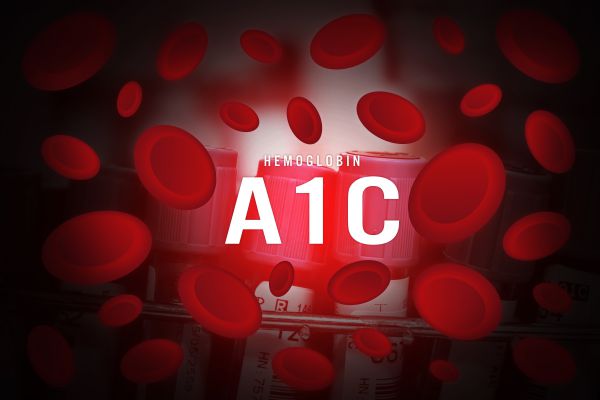How to explain A1C tests and results to your patients in Spanish?
According to the National Institute of Diabetes and Digestive and Kidney Diseases, The A1C test is a blood test that provides information about “a person’s average levels of blood glucose, also called blood sugar, over the past three months”.
So, if you want to explain the A1C tests and results to your Spanish speaking patients, it would be ideal for you to know what words and expressions are better to avoid misunderstandings and give them clear instructions and recommendations.
In today’s lesson, you will learn:
- A1C, diet & physical activity vocabulary in Spanish
- How to explain what the A1C test is in Spanish
- How to explain why the A1C test is important
- To describe A1C ranges in Spanish
- Vocabulary for factors that could give false A1C results
- Simple suggestions in Spanish for improving diet
- Easy instructions in Spanish for physical activity levels to help with blood sugar
Here is the A1C in Spanish lesson I taught to the Facebook group:
Subscribe to our YouTube Channel to see all of our lessons and get the latest videos right away!
What is A1C?
In English
- A1C is an average of your blood glucose over the last 2-3 months
- It’s not a measurement of your blood glucose in the moment
- It’s different from the number on the glucometer
- When you check your blood sugar on the glucometer, it’s a current number.
- It doesn’t give you an average, it gives you your blood sugar in the moment.
In Spanish:
- El A1C es un promedio de glucosa en la sangre de los últimos 2 a 3 meses.
- No es una medición de glucosa en el momento.
- Es diferente al número del glucómetro.
- Cuando usted se hace la prueba con el glucómetro, es una medición actual.
- No le da un promedio, le da el nivel de glucosa en el momento (actual).
Why is it important?
In English:
A1C is important for diagnosing:
- Pre diabetes
- Type 1 Diabetes
- Type 2 Diabetes
A1C is important for evaluating the treatment plan:
- Either you’re not following your treatment plan (diet & exercise)
- Or we need to change your medication dosing
In Spanish:
El A1C es importante para diagnosticar:
- La pre diabetes
- La diabetes tipo 1
- La diabetes tipo 2
El A1C es importante para evaluar el plan de tratamiento:
- O usted no sigue el plan de tratamiento (la dieta y el estilo de vida)
- O necesitamos cambiar la dosis de los medicamentos.
What’s the A1C normal range?
In English:
- Non-diabetic: less than 5.7%
- Prediabetic: between 5.7% – 6.4%
- Diabetic: 6.5% or more if you get similar results in two different appointments.
- Uncontrolled blood sugar: 8% or more
- Goal for managing diabetes: 7% or less
In Spanish:
- No diabético: Menor de 5.7% (por ciento)
- Pre diabético: 5.7 – 6.4%
- Diabético: 6.5% o más (medido en 2 citas diferentes)
- Azúcar no controlado: 8% o más
- El control de la diabetes: La meta para buen control de la diabetes es 7% o menos
Vocabulary to remember:
- Azúcar
: Sugar (azúcar sanguíneo
is also possible but not too common).
- Cambios de estilo de vida
: Lifestyle changes.
- Diagnosticar
: To diagnose.
- La meta
: The goal, the objective. You can use it in any context, except soccer.
- Plan de tratamiento
: Treatment plan.
- Promedio actual
: Current average (Be careful with this Spanish false friend. The Spanish word “actual” means “current”; whereas the English word “actual” could be translated as “real”, “exacto” or “vigente”).
- Dieta alta/baja en azúcar
: A high/low sugar diet.
- Glucosa
: Glucose.
- Hemoglobina poco común
: A rare hemoglobin
- Glóbulos rojos
: Red blood cells
- Azúcar no controlada por un tiempo
: A long-term uncontrolled sugar.
- Sangrado crónico
: Chronic bleeding.
- Anemia
: Anemia
- Transfusión de sangre
: Blood transfusion.
How to explain A1C to your patients:
- The simplest way: es un porcentaje de azúcar (o glucosa) en la sangre durante los últimos dos a tres meses.
- The serious way: Es una medición del porcentaje de hemoglobina que está cubierta de glucosa durante el último trimestre.
Giving more details about A1C:
- Talking about the hemoglobin: La hemoglobina es una proteína en los glóbulos rojos de la sangre.
- Talking about the red blood cells: Los glóbulos rojos son las células de la sangre que entregan oxígeno a las otras células del cuerpo.
- Explaining the possible factors that affect the A1C results:
- El sangrado crónico puede bajar sus niveles de hemoglobina y obtener un falso resultado bajo.
- Si usted tiene anemia (o deficiencia de hierro), puede obtener falsos resultados altos.
- Si tiene una hemoglobina poco común (que no es hemoglobina A), puede obtener falsos resultados altos o bajos (this is more common in black, mediterranian and asian people).
- Si usted ha tenido transfusiones de sangre recientemente, puede obtener falsos resultados bajos.
6 Easy Instruction starters in Spanish:
In English
- It’s important…
- It’s a good idea…
- You need…
- You should….
- You have to…
- One has to…
Diet Changes:
- Eat more vegetables with each meal
- Eat foods high in protein: lean meats, eggs, beans, nuts
- Eat fewer grains: breads, pastries, white rice, corn, sweets
- Drink water instead of sugary drinks like: juices, flavored waters, sodas, etc
Physical activity recommendations:
- Do some sort of physical activity at least 30 minutes a day
- It could be:
- Walking, running or jogging
- playing a sport
- actively playing with the kids
- dancing
- working in the garden or cleaning the house
In Spanish
- Es importante…
- Es buena idea…
- Usted necesita…
- Usted debe…
- Usted tiene que…
- Hay que…
Cambios de alimentación:
- Comer más verduras / vegetales con cada comida
- Comer comidas altas en proteínas: carnes magras, huevos, frijoles, nueces
- Comer menos granos: panes, pasteles, arroz blanco, maiz y dulces
- Tomar agua en vez de bebidas azucaradas como: jugos, aguas de sabores, refrescos, gaseosas, etc
Recomendaciones para actividad física:
- Hacer algún tipo de actividad física por un mínimo de 30 minutos por día.
- Puede ser:
- Caminar, correr o trotar
- Jugar a un deporte
- Jugar de manera activa con los niños
- Bailar
- Trabajar en el jardín o limpiar la casa
Karen’s Perspective
Algo que debes saber acerca de la palabra “azúcar” es que podemos usar el femenino (la azúcar) o el masculino (el azúcar) indistintamente. Asimismo, cuando decimos usamos “el azúcar”, podemos usar un adjetivo en femenino o masculino sin problema, por ejemplo:
También podemos hablar de “los azúcares” y “las azúcares”
, pero estas estructuras las usamos cuando hablamos de nutrientes, dietas o comidas. Por ejemplo:
- Los azúcares de las frutas.
- Las azúcares presentes en nuestra dieta.
Study this A1C vocabulary in Spanish with these flashcards
I put together a vocabulary list and set of notes that includes this information in an easily downloadable .pdf – Get your copy for free today!
Keep up the good work speaking responsible Spanish to your patients! Check out our other books, classes & products to help you !
*If the link isn’t working for you, you may need to unblock pop-ups in your browser settings.
[button link=”https://commongroundinternational.com/medical-spanish/discuss-signs-symptoms-diabetes-spanish/” style=”download” color=”green”]Related lesson: How to Discuss Signs and Symptoms of Diabetes in Spanish[/button]





